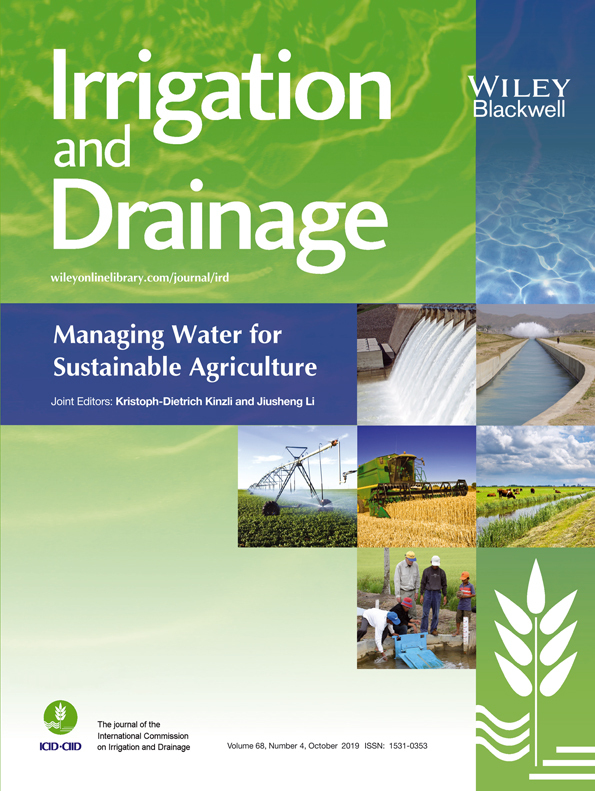ASSESSMENT OF SOLUTE TRANSPORT AND DISTRIBUTION UNDER DRY DRAINAGE CONDITIONS USING A PHYSICAL MODEL†
Abstract
enResearchers have recently investigated dry drainage in respect of decreasing environmental effects and investment cost reduction of traditional drainage systems in arid and semi-arid regions. This study investigated the effect of dry drainage on solute transport in a loamy soil using a physical model. The experiment lasted 84 days and results showed that the dry drainage system transferred a significant amount of dissolved salts from the irrigated area into the fallow area. Moreover, sodium, potassium, calcium, nitrate and chloride ions accumulated in the upper layers of soil of the fallow area but magnesium accumulated in the deeper layers. The ratios of sodium, potassium, calcium, magnesium, nitrate and chloride concentrations at the soil surface of the fallow area to the corresponding values in the irrigated area were 1.67, 1.20, 1.81, 0.90, 2.58 and 1.20, respectively. In addition, variation of SAR in the soil profile of the irrigated area was low and its value approached 1.58, but it increased with decreasing soil depths of the fallow area reaching 2.17 at the soil surface of this area. Although the results demonstrated the capability of dry drainage to transfer ions from the irrigated to the fallow area, further investigation regarding different aspects of this method is recommended. © 2019 John Wiley & Sons, Ltd.
Résumé
frDes chercheurs ont récemment étudié le drainage sec pour réduire les effets sur l'environnement et réduire les coûts d'investissement des systèmes de drainage traditionnels dans les régions arides et semi-arides. Cette étude a étudié l'effet d'un drainage sec sur le transport de solutés dans un sol limoneux à l'aide d'un modèle physique. L'expérience a duré 84 jours et les résultats ont montré que le système de drainage sec avait transféré une quantité importante de sels dissous de la zone irriguée vers la zone en jachère. De plus, les ions sodium, potassium, calcium, nitrate et chlorure se sont accumulés dans les couches supérieures du sol de la jachère, mais du magnésium dans les couches plus profondes. Les rapports des concentrations de sodium, de potassium, de calcium, de magnésium, de nitrate et de chlorure à la surface du sol en jachère avec les valeurs correspondantes dans la zone irriguée étaient respectivement de 1.67, 1.20, 1.81, 0.90, 2.58 et 1.20. De plus, la variation de SAR dans le profil de sol de la zone irriguée était faible et sa valeur avoisinait 1.58, mais elle augmentait avec la diminution de la profondeur du sol dans la zone de jachère atteignant 2.17 à la surface du sol de cette zone. Bien que les résultats démontrent la capacité du drainage sec à transférer des ions de la zone irriguée vers la zone en jachère, des investigations supplémentaires sur différents aspects de cette méthode sont recommandées. © 2019 John Wiley & Sons, Ltd.




